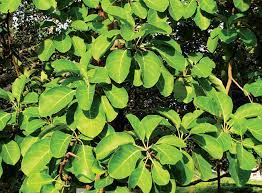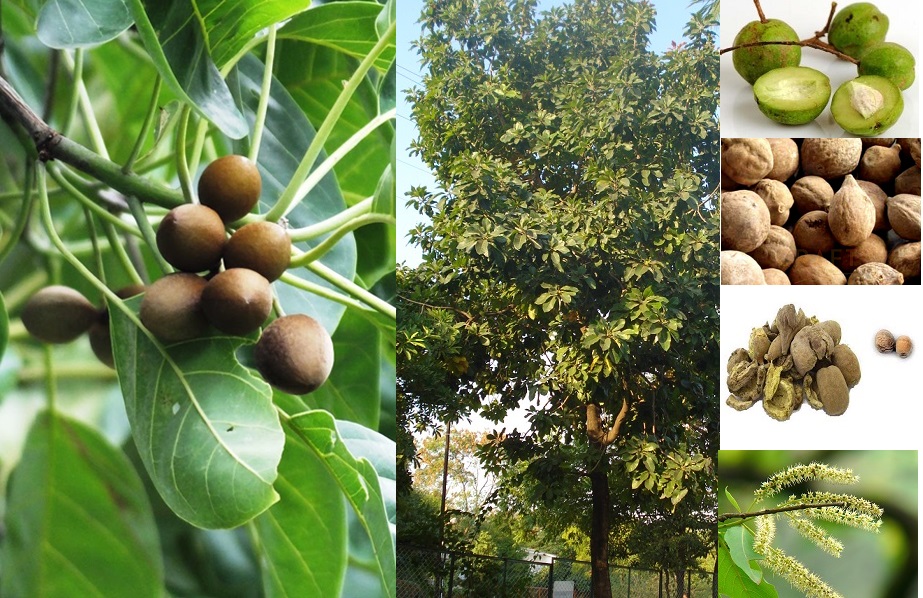Baheda Tree
SOS IN ENVIRONMENTAL SCIENCE
*Botanical name:- Terminalia bellirica
*Local name:- Baheda, Bahera, Behada, Beleric, Bastard myrobalan, Bibhitaka, Aksha, Bahuvirya, Karshphal, Bhutvaas, Kalk, Thani, Bolsuiri.
*Family - Combretaceae
Baheda Tree- These trees require direct sunlight for healthy growth. Flowering normally occurs in the summer season and flowers are small, pale greenish yellow colored and have a strong offensive odor.
Fruits- Fruits mature in winter season and measures about 2-4 centimeters long. They are oval-shaped and contains an oily kernel. These fruits are dried and used as a medicine.
* Medicinal used –
Hair- In Ayurveda, oil extracted from the seeds of Bibhitaki is used as a hair tonic to promote hair growth and even used for premature hair greying.
Anti cancer activity- Triphala, an ayurvedic formulation prepared by using Bibhitaki (Terminalia bellirica), Haritaki (Terminalia chebula) and Amla (Phyllanthus emblica) was believed to have cytotoxic effects on tumor cells.
liver- Oral administration of Baheda extract had shown positive effects on the liver by reducing the liver iron, lipid peroxidation, protein oxidation, liver fibrosis, serum enzymes, and ferritin in a dose dependent manner on the tested mice.
Respiratory- Baheda was used in traditional medicine for the treatment of respiratory problems like asthma and several digestive problems since ancient times.
Baheda for cold- Baheda is one of the main constituents of Triphala that is used for managing common cold and cough. This ayurvedic herb helps the patient breathe freely by controlling cough, expelling mucus, and clearing the air passages. Thus, it provides relief from cold and cough.
Depression- Depression is a mood disorder that can seriously affect our health. Although there are several drugs available for the treatment, they may have their own side effects.
Ulcer- Baheda is a wonderful herb that can be effective against stomach ulcers.
How to use-
Baheda fruit is mostly used in its powdered form and can be consumed by mixing with water or honey.
Note- Baheda fruit powder is possibly safe to use for most people. However, consult an ayurvedic physician or your doctor before use.
*Environmental benefits - The tree takes a height of about 30 meters and its bark is brownish grey in color.
It yields good-quality firewood and charcoal with a calorific value of sapwood being 5000 kcal-kg.
The leaves are about 15 cm long and crowded toward the ends of the branches.
It is considered a good fodder for cattle.
The species is found mostly in mixed dry deciduous forests and is frequent in tropical and subtropical zones, mostly in hilly tracks.
The plant prefers tropical environment, ascending in the sub-Himalayas zones up to an elevation of 1500 m.



